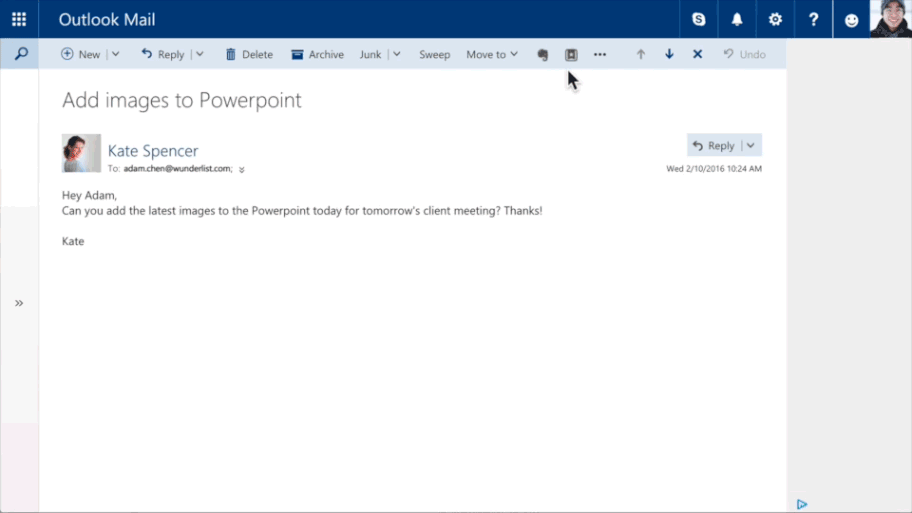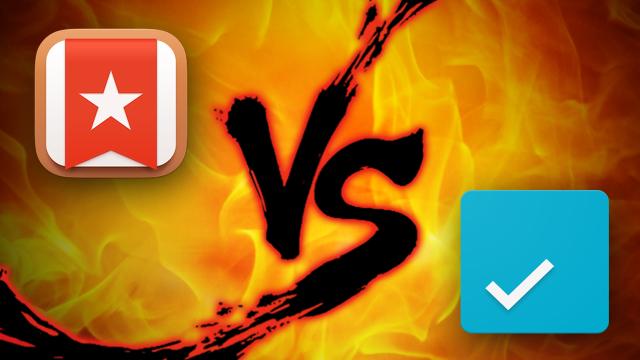It’s been a while since we’ve heard from some of our favourite to-do apps, Wunderlist and Any.Do, which means it’s a perfect time for a fresh look at both apps. Both are still some of the best, cross-platform, free to-do managers available, but let’s see how far they have come.
The Contenders
If you’ve spent any time at Lifehacker, you already know Any.do and Wunderlist. They have been featured in many of our roundups of great to-do list managers. We’re going to assume that you have some familiarity with them — they’re both to-do apps, they’re largely desktop and mobile, and have similar features to help you organise your to-dos, add them on the go, be reminded of them, and hopefully, get things done — but if not, here are the basics:
- Wunderlist: Wunderlist is a cross-platform to-do list and project organiser, with apps for Windows and OS X, Android and iOS, Windows Phone, the web, and more. It’s clearly one of our favourites, and earned our pick as the best for Windows, for Mac, and for Android. It’s streamlined, simple and easy to use, features timed reminders so you don’t miss a task, notes and additional information for each item, and it keeps all of your to-dos and due dates on the web and synchronised across devices. If you prefer, just use the webapp to manage your to-dos.
- tons of extra features under the hood. Like any good to-do manager, it syncs your to-dos and account across devices, is available on the web, and keeps track of your items so you don’t have to.
While some of our other favourite to-apps (like Google Keep and Todoist, for example) have picked up regular updates and improvements, these two have been a bit more quiet. In Wunderlist’s case, we assume the veil of silence descended once the company was aqcuired by Microsoft. For Any.Do, it’s not entirely clear. Let’s see where they are today.
How Wunderlist and Any.do Have Changed Lately

The fact that Any.do and Wunderlist haven’t made any splashy announcements or updates doesn’t mean they haven’t been making smaller, more incrimental improvements.
For example, a few months ago, Wunderlist updated its Android app to include quick-adding tasks, and integration with Google Now On Tap, and their iPhone and iPad apps got a similar update shortly after. Their Mac app got a similar update a few months earlier that made adding to-dos easier and added a few helpful shortcuts.
Just last month, Wunderlist unveiled a new plug-in for Microsoft Outlook that works with Outlook on the web, or the desktop version of Outlook included with Microsoft Office 2013, 2016, or Office 365. For its part, the Outlook plugin makes it easier to share to-do lists with collaborators via email, turn email into actionable to-dos, and set reminders based on emails and requests in your inbox. It’s pretty useful, assuming you use Outlook for mail — and in a corporate setting that’s a lot of people. That’s the kind of move we expected to see when Wunderlist was acquired by Microsoft. Similarly, Wunderlist recently added itself as a Zapier channel. If you’re not familiar with Zapier, think of it as a kind of IFTTT-like service that connects not just web services, but apps as well.
Over with Any.do, things have been a little more quiet. The app got a big uplift to Any.do 3.0 last year that improved to-do list collaboration, gave you the ability to zoom in and out of lists to check out sub-tasks or related items, and the option to sort all of your individual lists by time, priority, or list views. The new version picked up some design tweaks and improvements, and some usability improvements as well. Since then, the team unveiled a new iPad app that brought all of those same great features to the (slightly) larger screen.
What Wunderlist and Any.do Offer Free and Premium Users

At the same time though, a lack of big updates don’t mean nothing is happening. Any.do’s Android app was last updated this week, and its iOS app was updated earlier this month. Wunderlist for Android picked up an very welcome update earlier this month that improved the user experience for Android Wear owners, and its iOS app picked up Apple Watch support not too long ago. All of its apps picked up a necessary update to fix issues with daylight saving time here in the US.
There’s still active development behind the scenes, and lots of attention to bugs, usability, and smooth operation for both apps. It’s a shame we haven’t seen huge feature updates, or big improvements to some of each apps’ biggest issues (recurring tasks are still a common complaint in the app store reviews for both apps, for example), but both services are still working hard to make sure each app has the best to-do management experience available.
Both apps are still freemium, with most of their popular features available without paying anything. You can download any of them on all of your devices, add your to-dos, sync them, and get reminders when they’re due. However, both apps have premium features, and here’s what you get for your money:
- Wunderlist Pro ($US5 ($7)/mo or $US50 ($67)/yr) unlocks the ability to upload files of any size to attach to your to-dos, delegate tasks to an unlimited number of assignees (useful if you’re using Wunderlist on a team or with family), unlimited subtasks for your to-dos or projects, and additional cosmetic backgrounds to customise the apps. All in all, the pro version takes a few features limited (but still useful) in the free version and opens the door to them completely.
- Any.do Premium ($US3 ($4)/mo or $US27 ($36)/yr) allows you to share unlimited to-dos with collaborators or assignees (free accounts are limited to one shared task), customisable recurring tasks (free accounts are limited to pre-set recurrances), location-based reminders, support for larger files attached to your to-dos, cosmetic themes for the app, and unlimited use of one of Any.do’s best features, Any.do Moment — a kind of primer for your day that walks you through your to-dos and encourages you to get them done or reschedule them. In Any.do’s case, many of the premium features aren’t available at all in the free version.
All in all, Wunderlist is still in a better place as far as giving you more features for no money, while Any.do offers a huge value for the money you do wind up spending on a premium account. So it may be clear that neither app is quite “dead,” but it’s definitely possible that they both may be slowing down a bit. Their developers are working on bugfixes and stability improvements more than new features, for better or worse. While that definitely makes us sit up and take notice, it’s not necessarily a bad thing.
The Verdict: The Best for You Depends on What (If Anything) You’re Willing to Spend
The battle between Wunderlist and Any.do isn’t one that’s settled easily just by bringing everyone up to speed on where these two popular apps are today.
If we had to judge purely on who’s been busiest adding new features and benefits, and who offers the most bang for no buck at all, we would have to go with Wunderlist. We can’t really see the need for someone to open their wallet for Wunderlist Pro, unless they’re using Wunderlist on a small team.
However, for interesting and innovative features, premium or no, and for the most extra useful features for the money should you opt to pay for a premium account, we’d have to turn our eyes to Any.do. Any.do Moment is like a mini “weekly review” you can do every day, which is hugely useful, and they have more flexible recurring tasks — once you pay for them, that is. Any.do may be cheaper, but they definitely offer more features an individual may find useful to manage their own to-dos should you pay for an account upgrade.
Wunderlist is under the Microsoft umbrella now, which bodes well for its continued existence, upgrades, and support — but it’s possible one day Microsoft will just absorb it and its team for another project. Any.do on the other hand is independent, but it’s been quiet. While users can certainly support it by paying for it and its sister app, Cal, being independent and quiet can be a sign that the doors may close any day now, or they will get acquired.
Should that all really matter to you when choosing the best? Not really, but it’s worth considering if you’re planning to spend money, you’re thinking about switching to-do apps, or you’re wondering where these popular picks stand today. With all that in mind, and since they’re both free to start with, try them both to see which one resonates with you the most.

Comments